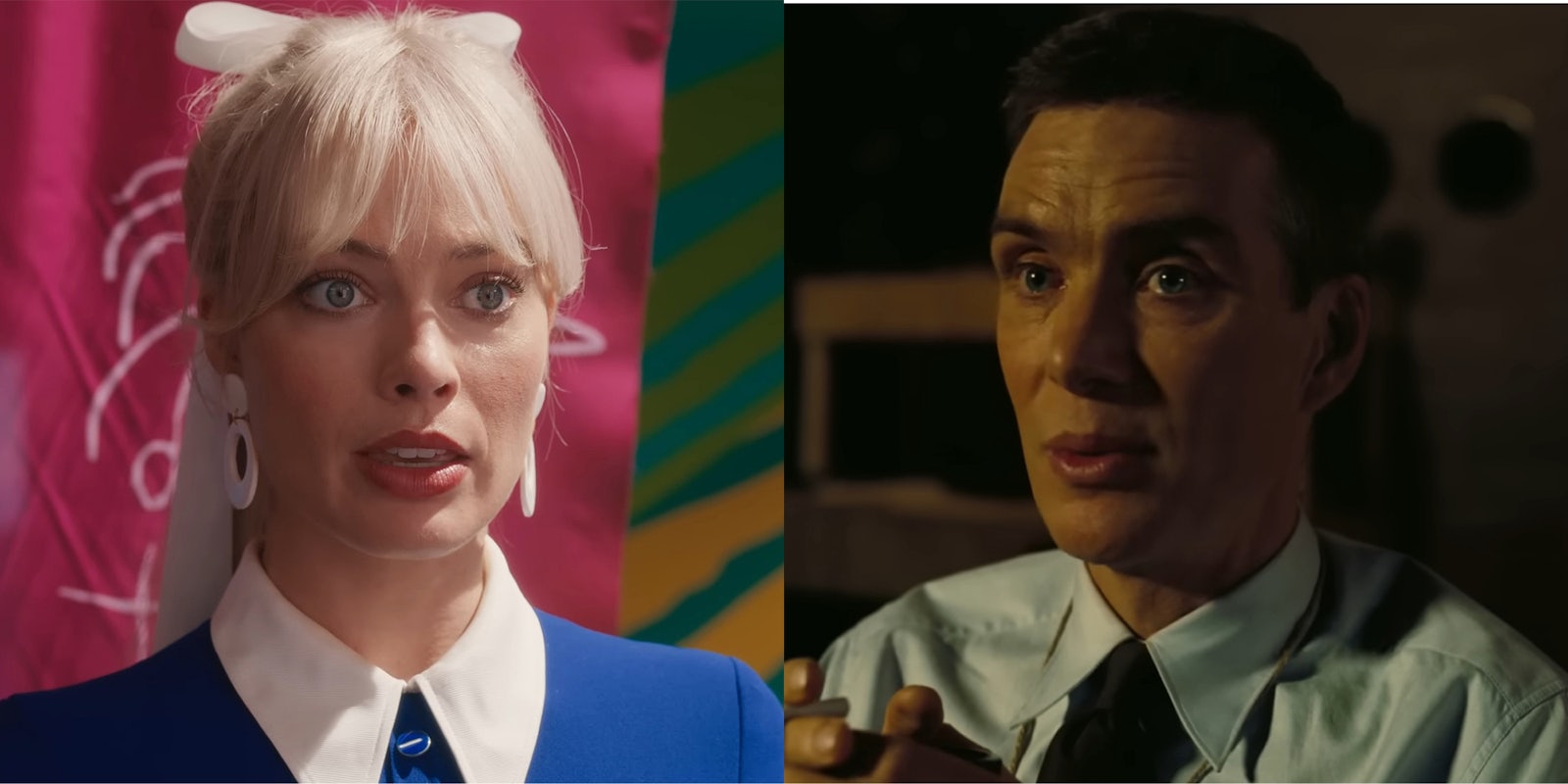There are plenty of lessons—good, bad, and contrived—people have taken from the runaway success of Barbenheimer after Barbie and Oppenheimer’s historic opening weekend at the box office.
You could argue that audiences are tired of sprawling superhero multiverses that are starting to feel like a job to keep up with, nostalgia-fueled legacyquels, and action movies with terrible visual effects; in comparison, Barbenheimer was the most refreshing option in ages. Maybe people were drawn to how audacious Barbie and Oppenheimer were in their own right and that audiences want more movies where filmmakers can tell the story they want without major studio interference. It could solidify that a Greta Gerwig film is now itself a box office draw (after three widely acclaimed successes) like Chris Nolan’s movies have been for several years.
A la Gentleminions, Barbenheimer’s success could suggest that people love an excuse to dress up for a fun day at the movie theater or to be part of a cultural moment. If you’re a Mattel exec looking to capitalize on Barbie’s momentum, it means thinking there’s an audience for a Mattel Cinematic Universe—which, so far, is very much not the case—over considering the possibility that Barbie might be a flash in the pan. And we’ll almost certainly have yet another conversation about how “surprising” it is that a movie primarily geared toward female audiences can do big numbers. (It’s actually not that surprising.)
If anything else might come out of Barbenheimer, I hope it’s this: We get more big-screen double features again. It might not—and probably won’t—be the box office success that Barbenheimer was, and seeing two very different movies compete head-to-head used to be the norm. It might also be a headache to make it work between who owns the rights to each movie. But with the right choices, it could capture some of the Barbenheimer camaraderie.
In the wake of the fourth biggest box office weekend ever, it’s almost inevitable that studios will try to make Barbenheimer again. But not every two movies work as a double feature. So why not lean into it and do something in the spirit of Barbenheimer and set up some smart counterprogramming—such as an older movie and a new release—over trying to make something like Saw Patrol happen?
Thematic resonance
Part of why Barbenheimer worked so well is that, despite their outward appearance suggesting two very different theater-going experiences, they both revolved around their titular character’s existential crises.
A successful double feature would likely need to find a similar aspect to bridge them together. You could pair a director’s new work with an older one or do the same with two movies starring the same actor, especially if they’re in conversation with each other. Or you could take screen an older film that clearly inspired a filmmaker’s new one so audiences can see how that influence affected the newer movie. Even horror or action movies featuring similar elements—such as the monster or fighting style—could work.
It’s all about gelling two movies that might not make sense at first but do only when you pair them together.
Timing
At just under five hours before you include trailer time at your local cinema, Barbenheimer is a hefty undertaking based on time alone. Unless you’re pulling off a Lord of the Rings marathon (extended edition, naturally), you might not get audiences to spend five-plus hours in a theater on a single day again. So that means going far back for at least one of those movies.
(For people who don’t think older movies sell, the theatrical run for the 25th anniversary of Titanic—a movie that’s almost always available to stream—made over $70 million worldwide earlier this year, so it’s not like there isn’t an audience who might want to see older movies on the big screen again, or for the first time.)
Apart from giving audiences a chance to watch older movies when they may be harder to find on streaming, it gives you more options to work with when planning the length of your double feature. You could find a shorter movie to pair with your longer blockbuster, but you could also pair two shorter movies together, meaning you could easily watch two movies for the runtime of one Oppenheimer.
Be smart about it
Double features are still happening on some level. Outside of indie theaters, it’s not uncommon to see theater chains like AMC offer opening night marathons when franchise sequels are about to be released: Marvel’s done it for several of their titles (including that monster MCU marathon ahead of Endgame), and I’ll be the first in line when double feature tickets for both of Denis Villeneuve’s Dune movies go on sale.
But while the easy answer might be to take two movies from the same franchise or series, it doesn’t always work out as you think it might.
You can’t pair Jurassic Park with one of the Jurassic World movies or Indiana Jones and the Dial of Destiny with one of the films from the original trilogy without reminding audiences how pale the newer film might be in contrast to the older one. So if you want to pull off that move, ensure the newer film can stand up to scrutiny.



